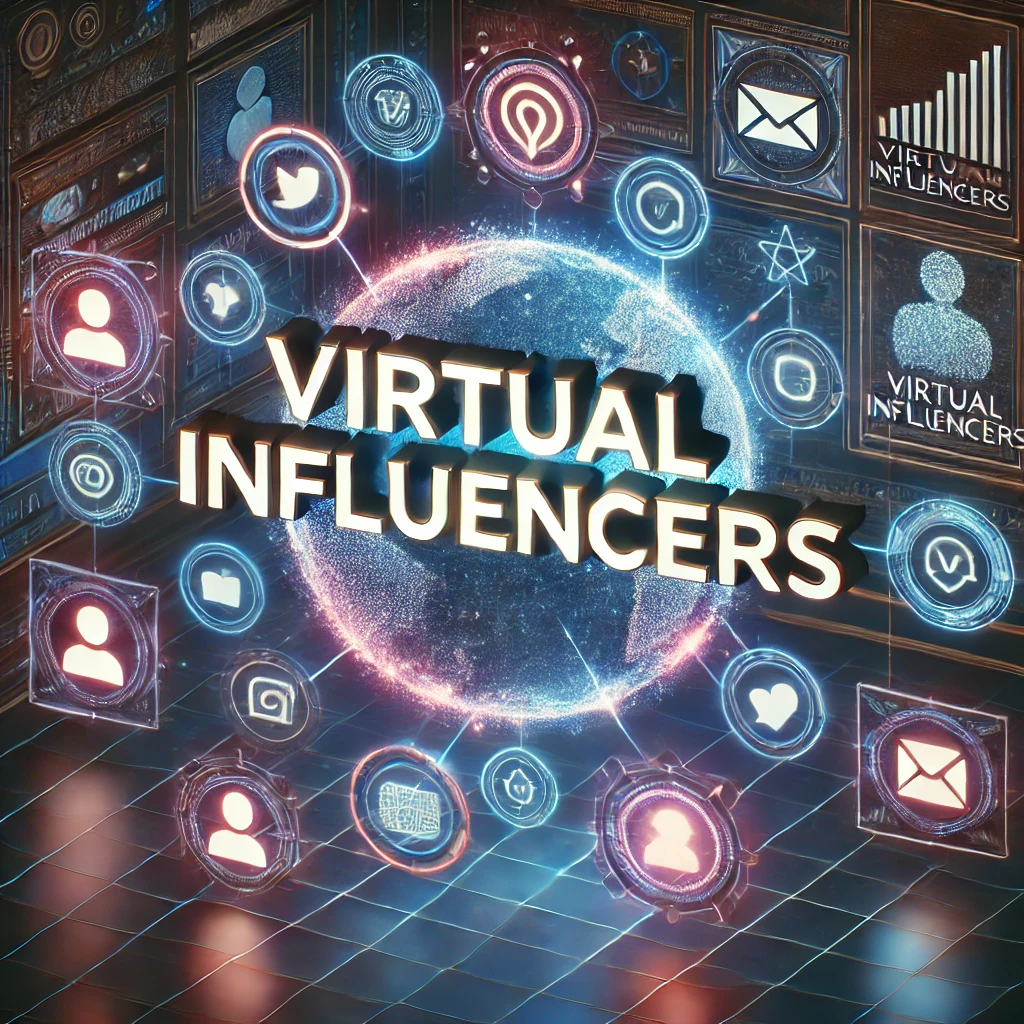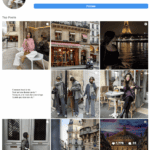Virtual influencers are not just a thought. They are now a reality. Would you believe that some brands no longer use human influencers?
These influencers are AI-generated. They are built to have the same character functions as human influencers. They can post selfies and content to their feed just like real people.
Virtual influencers are becoming popular. They are gaining quite a following which is why brands use them. Let’s see why they are so popular.
What are Virtual Influencers
These types of influencers exist on social media only. They are created using some high-tech stuff. CGI and AI play important roles. These are what allow them to behave like human influencers.
Historical Milestones
The first set of virtual influencers started sometime in the 2000s. They were created for video games and movies then. It was during the mid-2010s that they became popular on social media.
Lil Miquela was created by Brud in 2016. She quickly became a sensation on Instagram. other influencers like her such as Shadu Gram and Bermuda also became popular.
Technological Foundations

AI and Machine Learning
Virtual influencers are made possible by technological advancements in artificial intelligence (AI) and machine learning. They are created using complex AI algorithms. These algorithms generate realistic facial expressions, body movements, and even voice generation. This makes the influencers appear lifelike. These algorithms are trained using large datasets of human facial expressions and movements.
Machine learning is also used to train AI algorithms to understand and respond to human language. This allows virtual influencers to communicate with their followers in a natural and engaging way. They can also analyze data and gain insights into their followers’ preferences, behaviors, and interests.
Computer Graphics and CGI
Computer graphics and computer-generated imagery (CGI) are critical components in the creation of virtual influencers. These technologies are used to design and create their appearance, including their clothing, hairstyles, and makeup. CGI is also used to create virtual environments for them to interact with their followers. This may include virtual studios or outdoor locations.
The use of CGI and computer graphics allows these influencers to have a unique and distinctive appearance that sets them apart from human influencers. This technology also enables virtual influencers to change their appearance quickly, allowing them to adapt to different campaigns or branding initiatives.
AR and VR Integration
The integration of augmented reality (AR) and virtual reality (VR) technologies is another critical component in the creation of these influencers. AR and VR technologies allow these types of influencers to interact with their followers in immersive and engaging ways, creating a sense of presence and connection.
AR technology can be used to create virtual try-on experiences for makeup or clothing brands, allowing followers to see how products look on the virtual influencer before making a purchase. VR technology can be used to create virtual events or experiences, such as concerts or meet-and-greets, allowing followers to interact with them in a more personal and intimate way.
Impact on Marketing and Advertising
As virtual influencers continue to rise in popularity, they are impacting marketing and advertising strategies. In this section, we will explore how they are changing the landscape of influencer marketing and what it means for brands.
Influencer Marketing Strategies
Influencer marketing has become a popular way for brands to reach their target audience. Brands are now able to expand their reach even further with virtual influencers. This is because they offer a unique advantage over human influencers. Factors like availability, location, or scheduling conflicts do not limit these influencers. This allows brands to create more targeted and effective influencer marketing campaigns.
Brand Partnerships and Endorsements
These influencers are also changing the way brands approach partnerships and endorsements. Brands can now create long-term partnerships not limited by the lifespan of a human influencer’s career. This allows brands to build a consistent brand image and message over time.
Measuring Effectiveness
One of the biggest challenges in influencer marketing is measuring the effectiveness of campaigns. Brands have access to a wealth of data that can be used to measure the success of their campaigns when using virtual influencers. This data includes engagement rates, click-through rates, and other metrics that can be used to optimize campaigns and improve ROI.
Ethical and Social Considerations

Authenticity and Trust
Virtual influencers blur the lines between reality and fantasy, which raises concerns about authenticity and trust. They are not real people, and their actions and behaviors are controlled by their creators. This means that they can be programmed to promote products or services that they may not actually use or believe in. This can affect their credibility and make followers not trust them. However, some argue that virtual influencers are more transparent about their sponsored content and partnerships, which can increase trust with their audience.
To address these concerns, virtual influencers and their creators should be transparent about their partnerships and sponsored content. They should disclose when they are promoting a product or service, and be upfront about any compensation they receive. This transparency can help build trust with their followers and prevent any misunderstandings or deception.
Ethical Concerns
Virtual influencers raise some ethical concerns like objectification, stereotyping, and unrealistic beauty standards. They are often designed to embody idealized beauty standards or lifestyles, which can contribute to unrealistic expectations among their followers. Additionally, they can perpetuate harmful stereotypes or objectify certain groups of people.
To address these concerns,the creators should exercise responsibility and ethical considerations to ensure that their virtual influencers do not become vehicles for misleading or harmful information. They should avoid perpetuating harmful stereotypes or objectifying certain groups of people. Instead, they should strive to promote positive messages and values that align with their audience’s interests and values.
Regulatory Landscape
Currently, there are no specific regulations governing virtual influencers, but some existing regulations may apply. For example, the Federal Trade Commission (FTC) requires influencers to disclose their material connections to brands when promoting products or services. This means that they must disclose any compensation or incentives they receive for promoting a product or service.
As these types of influencers become popular, new regulations will likely be developed to address the unique ethical and social considerations that they raise. Virtual influencers and their creators should stay up-to-date on any new regulations or guidelines that may be introduced and ensure that they are in compliance with them.
The Future of Virtual Influencers

Evolving Trends
Virtual influencers have come a long way since their inception, and the future looks bright for these digital entities. With the rise of advanced technologies such as AI and machine learning, they are expected to become even more sophisticated and realistic in their interactions with audiences.
One trend that is expected to continue is the use of virtual influencers in marketing campaigns. Brands are increasingly turning to these influencers to reach younger audiences and create more engaging content. They also offer brands greater control over their messaging and can help them save costs associated with traditional influencer marketing campaigns.
Another trend that is emerging is the use of virtual influencers in the gaming industry. As virtual worlds become more immersive and realistic, these influencers can play a key role in creating engaging experiences for gamers. They can also help game developers create more personalized experiences for their audiences.
Potential Challenges
While virtual influencers have many advantages, there are also potential challenges that need to be addressed. One challenge is the issue of trust. As they become more popular, there is a risk that audiences may become disillusioned with them if they feel that they are being deceived. Brands and the creator of these influencers need to be transparent about their use of AI and other technologies to create virtual personas.
Another challenge is the potential for these influencers to perpetuate harmful stereotypes or promote unhealthy behaviors. Brands need to be mindful of the messages that their virtual influencers are promoting and ensure that they are aligned with their values and mission.
The Road Ahead
Looking ahead, virtual influencers are expected to become even more prevalent in our digital landscape. As technology continues to evolve, they will become even more realistic and engaging, blurring the lines between the digital and physical worlds.
As virtual influencers become more mainstream, it is important that brands and creators continue to innovate and push the boundaries of what is possible. By staying ahead of the curve and embracing new technologies, these types of influencers have the potential to shape our new reality in exciting and unexpected ways.
Frequently Asked Questions
What advantages do virtual influencers have over real-life influencers?
Virtual influencers have several advantages over real-life influencers. Firstly, they are not restricted by physical limitations such as age, gender, or location. Secondly, they can be created and controlled by brands, allowing for more control over their messaging and content. Thirdly, they can work around the clock, creating content and engaging with audiences 24/7.
In what ways have virtual influencers impacted the marketing industry?
Virtual influencers have disrupted the marketing industry by providing a new way for brands to connect with audiences. They offer a unique and engaging way to create content and promote products, without the limitations of real-life influencers. They have also opened up new opportunities for targeted marketing campaigns, as brands can create virtual influencers that appeal to specific demographics and interests.
How do virtual influencers interact with audiences differently than human influencers?
Virtual influencers interact with audiences differently than human influencers. They are not limited by physical constraints, allowing them to appear in multiple locations at once and engage with audiences 24/7. They also offer a unique and novel experience, as audiences are interacting with a digital entity rather than a real person. However, these influencers lack the authenticity of human influencers, which can lead to a lack of trust and engagement from some audiences.
What ethical considerations arise with the use of virtual influencers?
There are several ethical considerations that arise with the use of virtual influencers. Firstly, there is the question of transparency, as audiences may not be aware that they are interacting with a digital entity rather than a real person. Secondly, there is the risk of perpetuating unrealistic beauty standards and promoting harmful stereotypes through the creation of idealized virtual influencers. Finally, there is the potential for virtual influencers to be used for nefarious purposes, such as spreading disinformation or promoting harmful products.
How are brands leveraging virtual influencers for targeted marketing campaigns?
Brands are leveraging virtual influencers for targeted marketing campaigns by creating virtual influencers that appeal to specific demographics and interests. For example, a brand targeting young women may create a virtual influencer that embodies their brand values and appeals to that demographic. Virtual influencers can also be used to promote products in a more subtle and engaging way, without the overt product placement that is common with real-life influencers.
What role will virtual influencers play in the evolution of social media platforms?
Virtual influencers are likely to play a significant role in the evolution of social media platforms. They offer a new way for brands to connect with audiences and create engaging content, which is likely to become increasingly important as social media platforms continue to evolve. Additionally, virtual influencers may become more integrated into social media platforms, potentially leading to new forms of advertising and monetization.
Conclusion

Virtual influencers are becoming increasingly popular in the world of marketing and social media. They offer a unique way for brands to connect with their audience and promote their products or services. As discussed in this article, virtual influencers are different from human influencers in several ways. They lack authenticity, but they offer more control to brands over their projects.
However, virtual influencers are not without controversy. Some people argue that they promote unrealistic beauty standards and materialism. Others worry about the impact they may have on real human influencers and their livelihoods.
Despite these concerns, virtual influencers are here to stay. They are a product of our rapidly advancing technology and changing social media landscape.
If you’re not ready to embrace virtual influencers just yet, contact Insfollowpro to see how they can help you grow your following on Instagram.







